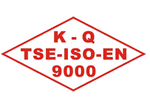Details for ME412/414/416 Wind Turbine Design Project
The purpose and scope of the wind turbine project is to:
• Design either a Horizontal-Axis or a Vertical-Axis Wind Turbine (HAWT AND VAWT, resp.) (the basic design with open-source QBlade Software)
• Perform computer simulations in ANSYS Fluent and Mechanical to assess aerodynamic and structural performances respectively
• Manufacture the turbine with a suitable method (composites, 3d printing, etc.)
• Design simple electronics to measure turbine power and control rotational speed
• Run the turbine in the final competition at the end of the semester
Numerical constraints are defined as the below:
• The height of the turbine tower must be 170cm; therefore, the center of the wind turbine rotor must also be 170cm from the ground
• The rotor swept area (projected frontal area) must fit within a square of 60cm*60cm (see the area formed by orange dashed lines), therefore only 0.6m*0.6m portion of the 1m*1m blowing area will be used. This corresponds to a turbine diameter (2*R) of 60cm both for horizontal and vertical axis wind turbines. In case for a vertical axis wind turbine (the one in the right in the above figure), turbine blade height (L) must also be maximum 60cm
VAWTs are typically less efficient than HAWTs. However, HAWT has a circular swept (frontal) area and the corners of the 60cm*60cm area cannot be covered (orange dashed lines in the figure). On the other hand, VAWTs can cover the corners since their swept area can be a rectangle. Therefore VAWT and HAWT are expected to produce similar powers under these constraints. The choice of turbine type will depend on the feasibility considerations of each team. Therefore you will decide which turbine to be used. A justification is definitely needed.
Success criteria:
• Power produced by the turbine is 60% in importance
• Weight of the complete turbine system (including the tower and electronics) is 40% in importance
Caution: Design and high-fidelity computer simulations (ANSYS) will also be considered during assessing above items. For example, a turbine that produces very high power but lacks satisfactory design and analysis background may get a much worse score than a moderate turbine with an excellent design and analysis reporting. In other words, a good reporting of design and analysis is a prerequisite. All of the design choices must be justified.
SOME GUIDELINES:
Wind speed will be taken as 10m/s
In order to make the initial basic aerodynamic design, you may use QBlade software. It is a quick power estimation and parametric design algorithm based on actuator disc blade element momentum (BEM) method. It needs individual lift and drag characteristics of 2D airfoil cross sections as inputs (either experimental or with embedded simple potential flow solver of QBlade). Then, it predicts the performance of stacked 3D blades (from 2D cross-sections) and wind turbine as a whole. Together with its user's guide, it can be downloaded from:
http://www.q-blade.org/#downloads
You may select suitable 2D airfoil profiles (like NACA profiles, a research topic for you) and import them and their a-CL and a-CD curves to QBlade (a: angle of attack). Once you make the basic design of the 3D blades and layout of the turbine, you can then proceed with mechanical (structural simulations, tower design, hub design, etc.) and electrical designs (power measurement and speed control, in collaboration with Asst.Prof.Dr.Hüseyin Yeşilyurt and the students of Electrical and Electronics Engineering Department). Manufacturing and testing will conclude the project.
An initial source that may be considered is: https://doi.org/doi:10.3390/en5093425








